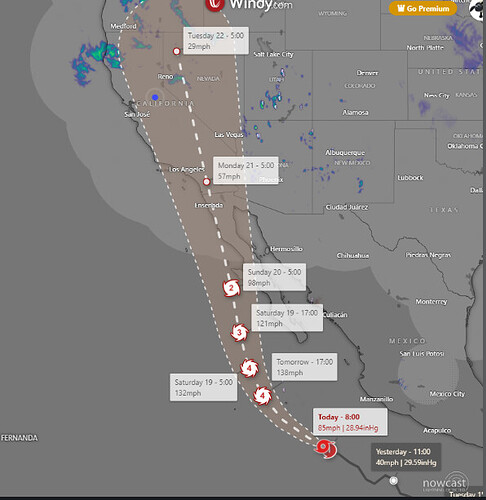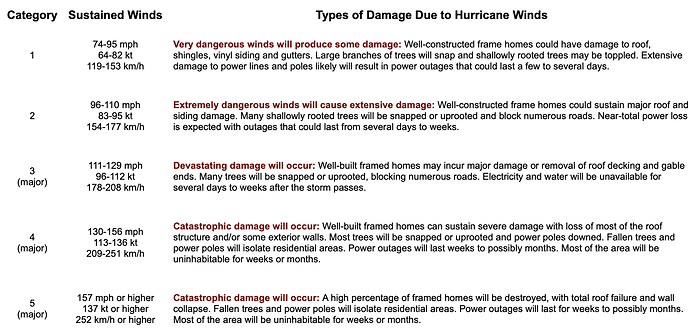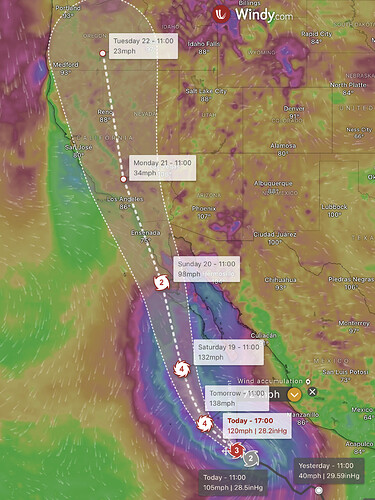2PM PST advisory is out on Hilary. She dropped another 5MB to 960MB and the winds rose a modest 5MPH to 110 MPH. Keep in mind that I believe all this information is without the assistance of hurricane hunter aircraft which will start flying in shifts tomorrow. That is when we will get real time data to go off of.
That’s what I’ve been seeing.
Is that advisory stating 110mph winds when she makes landfall?
The pics I put up are the 500 mb chart( where all the magic happens). That shows the upper level steering winds.
The lower the 850 mb chart( where we live) shows wind barbs. Too far out…but I would expect a transition to NW winds and then SE and then S before back to normal.
Could have a very high Haines Index. The fires up on the SRF and KNF could see some Haines of 6.
Remember… GCS of 8 intubate… Haines of 6 back off two clicks…
No…those are current winds estimated by radar
That is a computer simulation on an app… not one of the favored tracks of the models.
Record heat, dry lightning fires, tropical cyclone landfall, flooding all in one week… might as well throw in an earthquake too
Also, I forgot to mention that there will be a tornado threat in the outer bands… starting Sunday
Updated NWS status
https://www.axios.com/2023/08/16/tropical-storm-hillary-hurricane-flooding-california-arizona
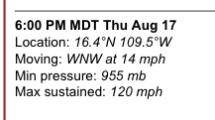
This advisory is very conservative, because ADT estimates the storm to be much stronger than that.
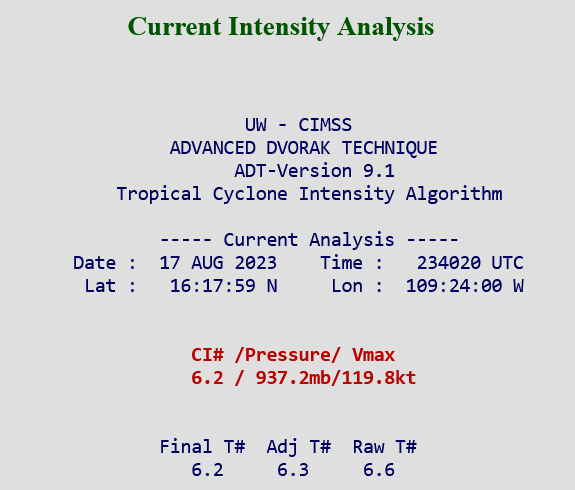
My weather app calling it cat3 now. Man, it’s building fast!
so pressure keeps dropping…
anyone have the stats from lets say katrina when it made landfall?
being that the water in warmer coming north, will this gain strength or lessen thru that passage?
The storm has about 36 hours to strengthen before it starts to weaken due to cooler waters and shear.
The storm will likely strengthen a lot tonight, because tropical cyclones have more convection during the overnight hours.
5pm PST update from the NHC on Hilary is she is gaining strength quickly. Up to 120MPH winds and pressure drop to 955MB. She is now a category 3 major hurricane and now forecast to go over 140MPH at her peak. The stronger she gets the less time she has to weaken and move north.
In 24 hours this storm has gone from a 40 MPH tropical storm to a 120 MPH monster. 80MPH increase is extreme rapid intensification. Going to be crazy to watch the development in the next 48 hours. A Cat 5 is not entirely out of the question.
East Pacific hurricanes are not like their Atlantic cousins… They fall apart much faster and do not have the same energy. Typhoons( west Pacific ) hurricanes are a different story. Much of this has to do with not only with water temperature and depth of the water temperature but the atmosphere as well. The Gulf of Mexico has much warmer water and a different climate that is more conducive to large storm development. The waves that come off of Africa and are the genesis for hurricanes develop a lot of energy over the warm waters of the Caribbean and the Gulf. They then enter an atmosphere that has higher dew points and more humidity. We have deserts here… that dry air tears the storms apart.
You can watch dry slots of air during Atlantic hurricanes, high pressure in the right spot will tear the storms apart or “destructively” phase with the storms and cause them to fall apart.
While the SST off the coast of Baja are warm they are no where near what the Gulf of Mexico is.
This will be impactful and will cause some damage from flooding but will not be anything like the storms that hit the SE.
“Strong” storms in the SE made me recall this. This was attention grabbing to my layperson eyes - to think that even more extreme storms occurred under a cooler climate than today! Yikes! #BeforeRecordKeeping

